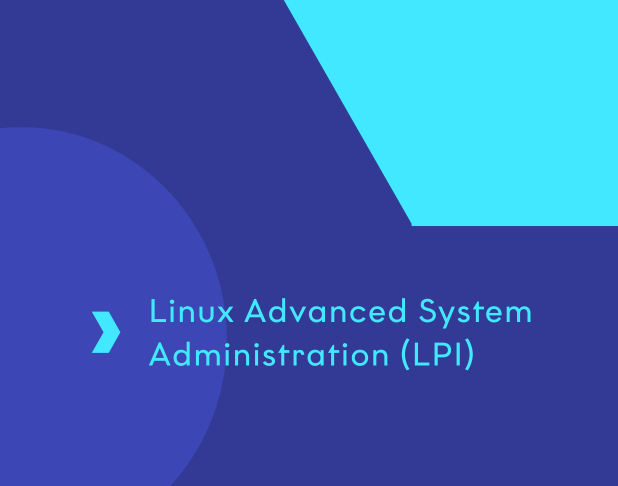This course takes experienced Linux users through a structured programme covering enterprise-level administration, network services, storage solutions, and system security. Mapped to the Linux Engineer LPIC-2 exam, it’s ideal for professionals aiming to achieve certification and enhance their career progression.
15% off eLearning, up to 20% off virtual courses - use code: EARLY1225SA
Linux Advanced System Administration (LPI)
Select your learning method

Master the tools to manage complex Linux environments
Over five days, this instructor-led training explores complex administrative and security tasks in Linux. Whether you’re looking to formalise your experience or prepare for certification, this course equips you with the practical skills and real-world insights needed to support critical Linux infrastructure.
- Set up advanced network services
- Implement RAID, LVM, and iSCSI
- Harden systems with firewalls and HIDS
- Configure and diagnose DNS and DHCP
- Deploy secure virtual hosts
- Build software from source code
- Integrate LDAP directories
- Optimise and monitor performance
What you’ll learn
Develop practical knowledge to handle advanced Linux tasks with confidence. With guidance from our expert trainers and access to our live labs, you'll leave ready to apply your skills in real-world environments.
Advanced networking
Deepen your understanding of how Linux handles complex network environments. You’ll learn to configure network interfaces and routing, analyse traffic patterns, and troubleshoot issues using a suite of diagnostic tools. The course also covers the deployment and management of key web services, guiding you through the set-up of Apache, Squid, and Nginx.
Security and access control
Learn how to strengthen system security and manage user access with confidence. You’ll configure firewalls using iptables, apply rule-based filtering, and explore NAT and connection tracking. The course also introduces host intrusion detection systems (HIDS) to help monitor and respond to threats. Additionally, you’ll configure secure email services using Postfix and Dovecot, giving you a strong foundation in protecting Linux systems and communications in enterprise environments.
Automation and system integration
Streamline system operations and improve resource access through advanced automation techniques. You’ll learn how to use AutoFS to configure on-demand network mounts and simplify access to remote file systems with NFS. The course also covers GRUB2 configuration, enabling you to take control of the Linux boot process, including managing multiple kernel versions.
- 5 days of instructor-led training in a live virtual classroom
- Interactive hands-on live labs
- All relevant course materials
- Course completion certificate
Key facts
IT professionals who want to strengthen their Linux enterprise skills and move towards Linux Engineer LPIC-2 certification
Completion of our Linux System Administration (LPI) training or equivalent hands-on experience is expected.
Our experienced trainers and interactive labs create a focused, practical environment – so you can put theory into practice from day one.
FAQs
This instructor-led course spans five days and focuses on complex Linux administration tasks such as networking, storage and security. It prepares learners for Linux Engineer LPIC-2 certification with strong emphasis on real-world application.
What prior knowledge do I need before taking the Linux Advanced System Administration (LPI) course?
Before starting this course, learners should have practical Linux administration experience or have completed ILX’s foundational Linux System Administration (LPI) course.
What topics are covered in this course?
This course covers the advanced skills needed to administer and support Linux in demanding enterprise environments. You’ll learn to configure services like DNS, DHCP, Apache and Samba; manage storage with RAID, LVM, Btrfs and XFS; and secure systems using iptables, HIDS, PAM, and Postfix. Each topic is reinforced through hands-on exercises to build practical, job-ready skills.
How can I monitor Linux system performance?
On this course, you’ll learn to monitor system performance by using key Linux tools that give you real-time and historical data on how your system is running. You’ll work with commands like top, vmstat, iostat, and sar to track CPU load, memory usage, disk activity, and I/O throughput. With this knowledge, you’ll be able to pinpoint performance issues and make informed adjustments to keep systems stable.
What our customers say

“John made the subject matter interesting. The pacing was spot on and he clearly knew what he was talking about and was able to communicate that easily. Very pleased and would highly recommend.”

“Very knowledgeable instructor - well-paced, not rushed. Everything was explained clearly.”
Join the half a million learners developing their skills with our training
A trusted partner to thousands of organisations worldwide
Our passionate team goes above and beyond to support customer needs
Please complete the form to ensure your quote is accurate and we will contact you soon.